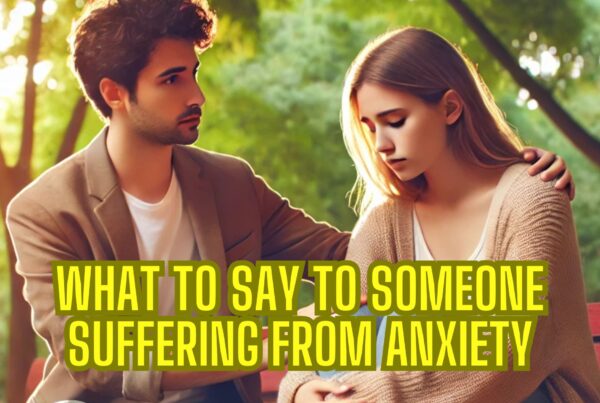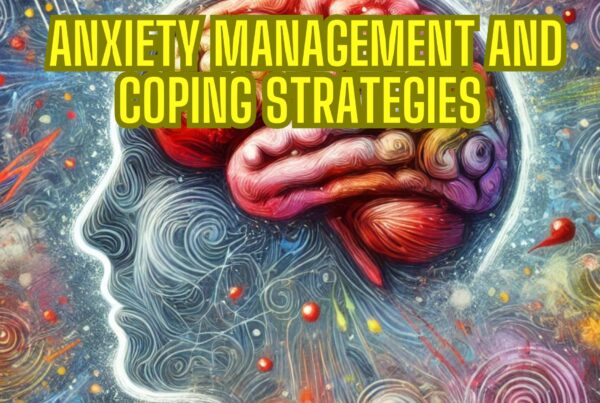The Complex Relationship Between Anxiety and Emotion Recognition
Anxiety is a universal experience that shapes many aspects of our lives, including how we interpret and respond to others’ emotions. One fascinating area of research explores how anxiety influences emotion recognition, especially in facial expressions. This relationship is multifaceted, revealing both enhanced and impaired abilities depending on the context.
In this article, we delve deep into the interplay between anxiety and emotion recognition, uncovering the factors that shape this dynamic and the implications for social interactions.
Anxiety and Emotion Recognition Accuracy
Anxiety often impacts how individuals recognise and interpret emotions in others. Some studies indicate that individuals with higher levels of social anxiety demonstrate greater accuracy in identifying facial expressions, particularly for those within their cultural or social group. This enhanced ability may stem from heightened sensitivity to social cues, a characteristic of socially anxious individuals.
Conversely, research also suggests that anxiety can impair emotion recognition accuracy, especially when it comes to negative expressions like anger. The conflicting evidence underscores the complexity of this topic, highlighting the need for further exploration into the nuances of individual differences and situational contexts.
Emotion-Specific Effects of Anxiety
Anxiety’s influence on emotion recognition is not uniform across all emotional expressions. For instance, individuals with higher anxiety levels often exhibit increased sensitivity to angry faces, a phenomenon linked to their heightened threat perception. This response could serve as an evolutionary mechanism, helping individuals detect potential threats quickly.
Interestingly, those with high social anxiety may also show improved accuracy in recognising positive emotions, such as happiness, or other expressions like sadness and fear. This suggests that while anxiety heightens sensitivity to perceived threats, it does not necessarily impair the recognition of all emotions.
Intensity of Facial Expressions
The intensity of facial expressions plays a critical role in how anxiety affects emotion recognition. Low-intensity expressions, particularly those signalling anger, are more likely to be misinterpreted by individuals with anxiety. This tendency could stem from a negative bias, where ambiguous expressions are perceived as more threatening.
In contrast, high-intensity expressions are typically recognised more accurately, even by those with anxiety. This difference highlights the interplay between cognitive biases and emotional intensity, demonstrating how anxiety shapes perception under varying conditions.
In-Group Versus Out-Group Faces
Cultural and social factors significantly influence the relationship between anxiety and emotion recognition. Studies reveal that individuals with anxiety are more accurate in identifying emotions in faces belonging to their cultural or social group (in-group) compared to those from outside their group (out-group).
This discrepancy may arise from familiarity and exposure, as individuals are more adept at interpreting expressions common within their environment. Additionally, heightened sensitivity to in-group social cues could be an adaptive strategy for navigating complex social dynamics.
State Anxiety Versus Trait Anxiety
The distinction between state anxiety (temporary) and trait anxiety (chronic) further complicates the relationship between anxiety and emotion recognition. State anxiety often amplifies sensitivity to negative stimuli, such as threatening words or expressions, regardless of a person’s baseline (trait) anxiety.
This heightened sensitivity during periods of acute stress suggests that anxiety’s impact on emotion recognition is not static. Instead, it fluctuates depending on both internal and external conditions, emphasising the dynamic nature of this psychological phenomenon.
Confidence in Emotion Recognition
Another intriguing aspect of anxiety’s impact is its effect on confidence in emotion recognition. Individuals with high social anxiety often report lower confidence in their ability to identify emotions accurately, even when their performance is unaffected.
This lack of confidence can exacerbate social withdrawal and avoidance behaviours, creating a cycle of anxiety and impaired social functioning. Addressing these perceptions through interventions could significantly improve quality of life for those with anxiety disorders.
Face Masks and Emotion Recognition
The global adoption of face masks during the COVID-19 pandemic presented a unique challenge for emotion recognition. Masks obscure critical facial features, reducing accuracy in identifying emotions across the board. For individuals with anxiety, this added layer of complexity may exacerbate existing difficulties in social interactions.
However, masks also reduce exposure to certain stress-inducing cues, potentially offering a mixed impact on anxiety. Understanding how these factors interact could inform strategies for improving communication and emotional understanding in masked environments.
The Role of Context in Emotion Recognition
Context plays a pivotal role in how anxiety influences emotion recognition. Factors such as environmental stressors, cultural norms, and personal experiences shape the interpretation of facial expressions. Anxiety heightens sensitivity to these contextual cues, sometimes enhancing recognition and other times distorting it.
For instance, a socially anxious individual in a high-pressure setting may misinterpret neutral expressions as negative, while in a supportive environment, they might accurately identify a wider range of emotions. This variability underscores the importance of situational awareness in understanding anxiety’s effects.
Neurobiological Insights Into Anxiety and Emotion Recognition
Emerging research in neuroscience provides valuable insights into the mechanisms underlying anxiety and emotion recognition. Brain regions such as the amygdala, responsible for processing fear and threats, are often hyperactive in individuals with anxiety. This heightened activity may explain their increased sensitivity to negative emotions.
Conversely, other areas like the prefrontal cortex, which regulates emotional responses, may exhibit reduced activity, leading to impaired control over these heightened sensitivities. These findings highlight the intricate balance between different brain systems in shaping emotional perception.
Implications for Social Interactions
The interplay between anxiety and emotion recognition has profound implications for social interactions. Misinterpretation of emotions can lead to misunderstandings, strained relationships, and increased feelings of isolation for individuals with anxiety.
Recognising these challenges can foster empathy and encourage the development of supportive environments. Interventions aimed at improving emotion recognition skills may also help individuals with anxiety navigate social situations more effectively.
Strategies for Managing Anxiety and Enhancing Emotion Recognition
Several strategies can help mitigate the effects of anxiety on emotion recognition. Mindfulness and cognitive behavioural therapy (CBT) are effective approaches for reducing anxiety and improving emotional awareness. Practising emotion recognition exercises, such as identifying emotions in images or videos, can also enhance these skills.
Additionally, fostering open communication and seeking feedback in social interactions can help individuals with anxiety build confidence in their emotional interpretation abilities. These proactive measures contribute to better emotional understanding and stronger relationships.
The Future of Research on Anxiety and Emotion Recognition
As the understanding of anxiety and emotion recognition continues to evolve, future research will likely explore the intersection of technology and psychology. Tools such as artificial intelligence and virtual reality could offer innovative ways to study and improve emotion recognition in individuals with anxiety.
These advancements have the potential to revolutionise treatment approaches, providing personalised interventions that address the unique challenges faced by those with anxiety. The possibilities are both exciting and promising for improving mental health outcomes.
FAQs
- How does anxiety affect emotion recognition accuracy?
- Anxiety can both enhance and impair emotion recognition accuracy, depending on the context and type of emotion. For instance, individuals with social anxiety may excel at identifying expressions within their in-group but struggle with certain negative emotions like anger.
- Why are individuals with anxiety more sensitive to angry faces?
- Anxiety heightens threat perception, making individuals more sensitive to angry expressions as a potential sign of danger. This heightened sensitivity may serve as an adaptive mechanism for detecting threats quickly.
- Do face masks worsen emotion recognition for anxious individuals?
- Yes, face masks obscure facial cues, reducing accuracy in emotion recognition for everyone, including those with anxiety. This effect can compound difficulties for individuals already struggling with social interactions.
- Can mindfulness help with anxiety and emotion recognition?
- Mindfulness can reduce anxiety and improve emotional awareness, helping individuals better interpret and respond to others’ emotions.
- What role does cultural background play in emotion recognition?
- Cultural background significantly influences emotion recognition, as individuals are generally more adept at interpreting expressions common within their in-group compared to out-group members.
- Is emotion recognition training effective for managing anxiety?
- Yes, emotion recognition training can enhance skills and build confidence, helping individuals with anxiety navigate social situations more effectively.
Summary: Anxiety and emotion recognition
The relationship between anxiety and emotion recognition is complex, shaped by a myriad of factors ranging from emotional intensity to cultural context. While anxiety can sometimes enhance sensitivity to emotions, it often distorts perception, leading to challenges in social interactions.
By understanding this dynamic and employing effective strategies, individuals with anxiety can improve their emotional interpretation abilities and foster more meaningful connections.
Release Hypnosis Melbourne Hypnotherapy
Since 2015, Lawrence Akers has been working under the name Release Hypnosis offering Hypnotherapy and ACT based work to the people of Melbourne or an online service. Based on St Kilda Rd, Release Hypnosis is an easy and convenient location to get to and accessible by the ANZAC station train and tram stop. Release Hypnosis can help with a wide range of presenting issues, and I offer a free 30 minute no obligation discovery call for those who are unsure if hypnotherapy is the right way forward for them.
Book Your FREE 30 Minute Consultation With Release Hypnosis NOW!
You may also like to read:
Hypnotherapy: A Guide to Healing Through the Subconscious
The Neuroscience of Gratitude and Effects on the Brain: Unlocking Mental Resilience
Best Hypnotherapy Resources 2024: Release Hypnosis Top Blogs
What Is The Success Rate of Hypnosis?
Release Hypnosis Melbourne Hypnotherapy is accessible for people in: Abbotsford, Armadale, Albert Park, Balwyn, Bentleigh, Black Rock, Box Hill, Brighton, Brunswick, Bulleen, Bundoora, Camberwell, Canterbury, Carnegie, Caulfield, Chadstone, Cheltenham, Clayton, Coburg, Collingwood, Deer Park, Doncaster, Elsternwick, Eltham, Elwood, Epping, Essendon, Fairfield, Fitzroy, Footscray, Glen Iris, Glen Waverley, Glenhuntly, Greensborough, Hampton, Hawthorn, Heidelberg, Highet, Ivanhoe, Kew, Kooyong, Lalor, Laverton, Lower, Plenty, Macleod, Malvern, Middle Park, Moonee Ponds, Melbourne, Moorabbin, Mount Waverley, Murrumbeena, Northcote, Oakleigh, Ormond, Parkville, Pascoe Vale, Port Melbourne, Prahran, Preston, Richmond, Rosana, Sandringham, South Yarra, South Melbourne, Spotswood, St Albans, St Kilda, Surrey Hills, Templestowe, Thornbury, Toorak, Tullamarine, Williamstown, Yarraville, North Melbourne, Windsor, East Melbourne, Melbourne, Melbourne CBD, Melbourne 3004








